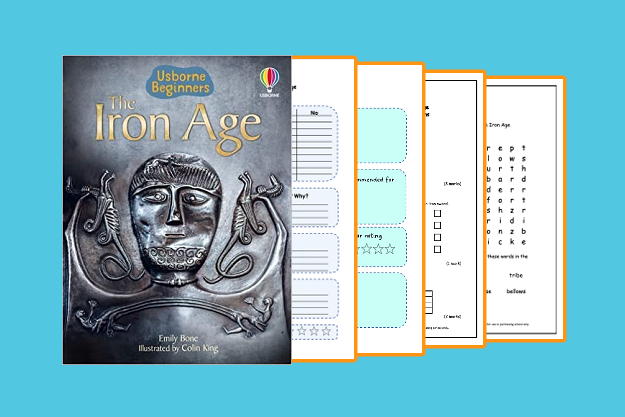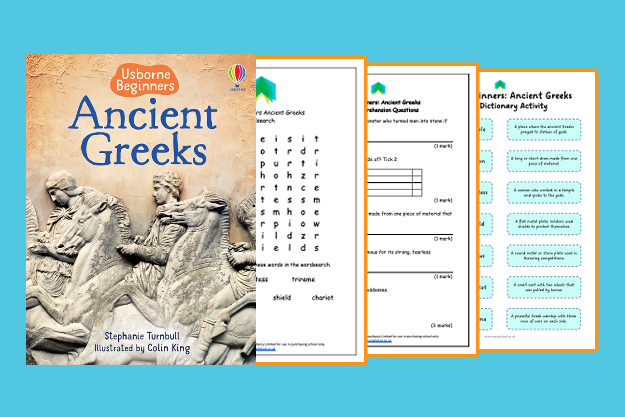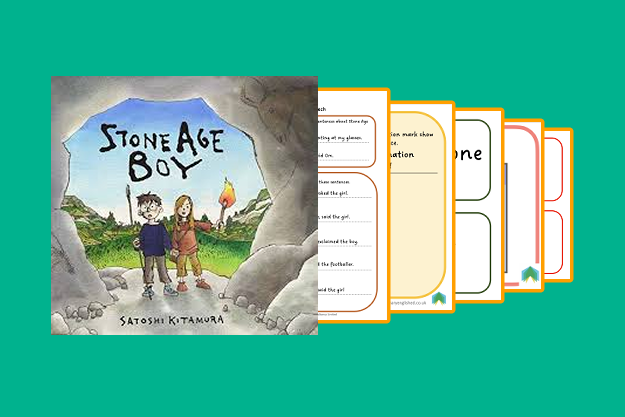 Image 1 of 2
Image 1 of 2

 Image 2 of 2
Image 2 of 2



Starting Points: The Secrets of Stonehenge
Starting Points are written to help you plan book-based units of work. In this set based on The Secrets of Stonehenge by Mick Manning and Brita Granström you’ll find ideas to support spoken language, reading, writing, grammar, vocabulary and spelling. This Starting Points resource will give you everything you need to plan a beautiful book-based unit of work for children in KS2.
Year 3
Word families based on common words
Expressing time, place and cause using conjunctions, adverbs and prepositions
Introduction to paragraphs as a way to group related material
Headings and sub-headings to aid presentation
Introduction to inverted commas to punctuate direct speech
Year 4
Fronted adverbials
Use of paragraphs to organise ideas around a theme
Appropriate choice of noun or pronoun to aid cohesion and avoid repetition
Use of inverted commas and the punctuation to indicate direct speech
Use of commas after fronted adverbials
Year 5
Indicating degrees of possibility using adverbs or modal verbs
Devices to build cohesion within a paragraph
Linking ideas across paragraphs using adverbials of time
Use of commas to clarify meaning or avoid ambiguity
Year 6
Use of the passive to affect the presentation of information in a sentence
Linking ideas across a text with a range of cohesive devices
Layout devices (headings, sub-headings etc to structure the text)
Use of colon to introduce a list
How hyphens can be used to avoid ambiguity
This pack contains the following resources:
Book review
Commas table
Vocabulary cards
Definitions cards
What we already know/ What we have learned table
Y3 and Y4 Statutory Spelling words
Y5 and Y6 Statutory Spelling words
Starting Points are sets of book-based planning ideas. The books are not included in the packs.
Starting Points are written to help you plan book-based units of work. In this set based on The Secrets of Stonehenge by Mick Manning and Brita Granström you’ll find ideas to support spoken language, reading, writing, grammar, vocabulary and spelling. This Starting Points resource will give you everything you need to plan a beautiful book-based unit of work for children in KS2.
Year 3
Word families based on common words
Expressing time, place and cause using conjunctions, adverbs and prepositions
Introduction to paragraphs as a way to group related material
Headings and sub-headings to aid presentation
Introduction to inverted commas to punctuate direct speech
Year 4
Fronted adverbials
Use of paragraphs to organise ideas around a theme
Appropriate choice of noun or pronoun to aid cohesion and avoid repetition
Use of inverted commas and the punctuation to indicate direct speech
Use of commas after fronted adverbials
Year 5
Indicating degrees of possibility using adverbs or modal verbs
Devices to build cohesion within a paragraph
Linking ideas across paragraphs using adverbials of time
Use of commas to clarify meaning or avoid ambiguity
Year 6
Use of the passive to affect the presentation of information in a sentence
Linking ideas across a text with a range of cohesive devices
Layout devices (headings, sub-headings etc to structure the text)
Use of colon to introduce a list
How hyphens can be used to avoid ambiguity
This pack contains the following resources:
Book review
Commas table
Vocabulary cards
Definitions cards
What we already know/ What we have learned table
Y3 and Y4 Statutory Spelling words
Y5 and Y6 Statutory Spelling words
Starting Points are sets of book-based planning ideas. The books are not included in the packs.















